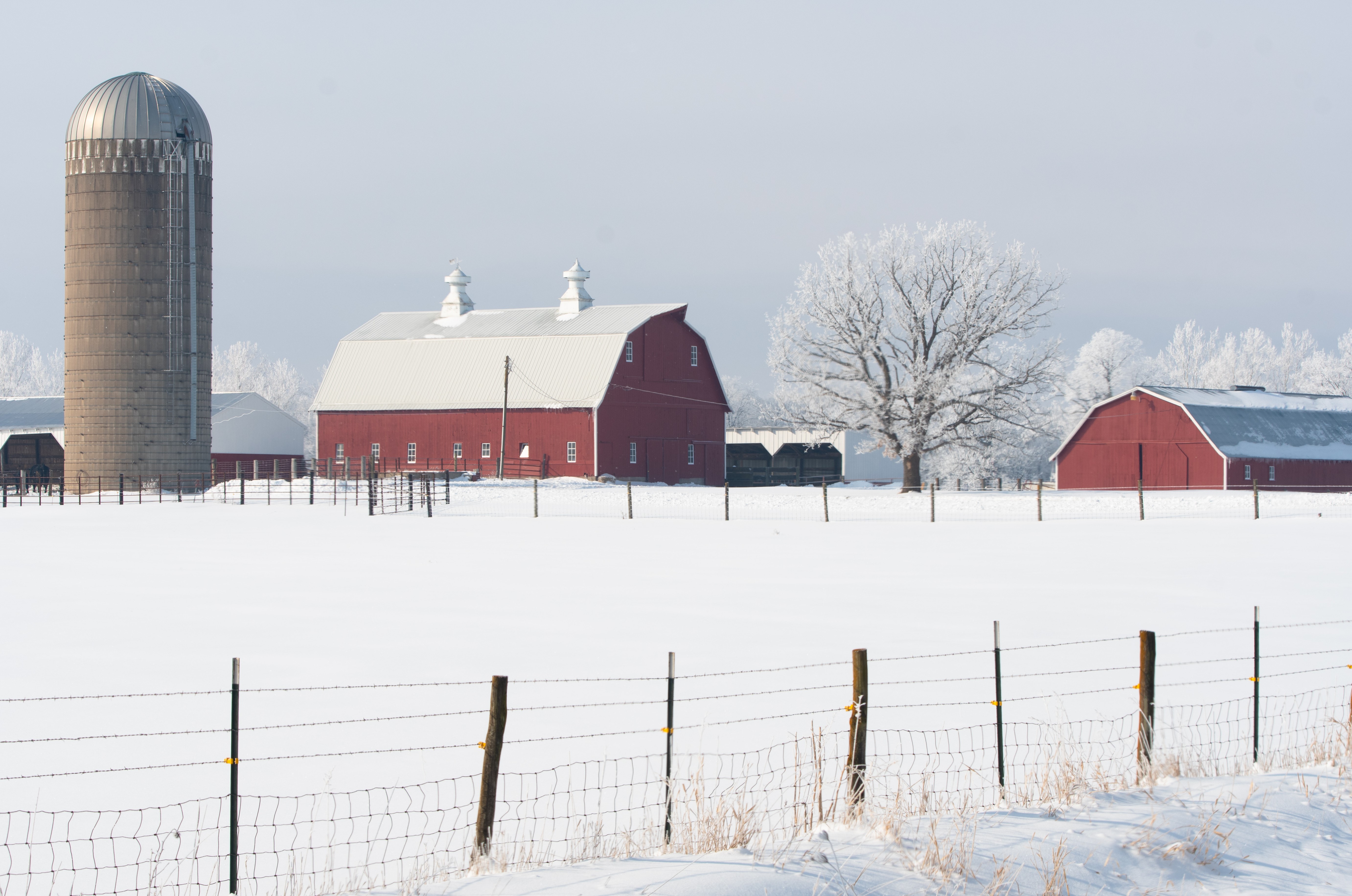
The Federal Reserve’s lowering of interest rates contributed to the increase in land values according to Iowa State University's Land Value Survey. (Photo: Joseph L. Murphy/Iowa Soybean Association)
Iowa farmland values up 1.7%
December 28, 2020 | Bethany Baratta
Favorable interest rates, continued demand for land and substantial government payments buoyed farmland values in a year marked with uncertainties.
Iowa State University’s (ISU) Land Value Survey, issued this month by the ISU’s Center for Agricultural Rural Development, propped the state’s average land value 1.7% over 2019 to $7,559 per acre.
“The increase is modest, but indicates the stability of the farmland market,” said Wendong Zhang. Zhang, an assistant professor of economics at Iowa State University responsible for leading the annual Iowa Land Value Survey.
The 2020 land value represents a 13% decline from the 2013 peak at $8,716 per acre, a 22% drop in inflation-adjusted values. The rise in land value is the third rise in the past 5 years and second consecutive rise from the 2013 peak.
The results of the survey are based on 707 usable county-level land value estimates provided by 484 agricultural professionals, including licensed real estate brokers, farm managers, appraisers, agricultural lenders, county assessors, and selected individuals considered to be knowledgeable of land market conditions.
Contributing factors
The Federal Reserve’s lowering of interest rates in March 2020 contributed notably to the increase in land values, Zhang said. Strong government support in the form of the Coronavirus Food Assistance Program (CFAP 1 and 2) payments and recent surges in agricultural exports and commodity prices also provided support to an increase in values, he said.
“The interest rate cuts and agricultural export surges will have significant implications on commodity prices, farm incomes, and farmland values,” Zhang said. “While no one can predict the future, it seems that Iowa farmland values have proved resilient during the pandemic.”
District breakdown
Southwest Iowa reported the only decline in value (0.9%) among the nine crop reporting districts in the state, Zhang noted. Crop reporting districts in the state saw an increase in farmland value from ranging from 0.2% (North Central district) to 3.9% (West Central).
Across the nine crop reporting districts and 99 counties, land value patterns were localized and mixed, driven by changes in local land supply and demand, Zhang noted. The $7,559 per acre estimate, and 1.7% increase in value, represents a statewide average of low-, medium-, and high-quality farmland between November 2019 and November 2020.
While high-quality land in Iowa saw an overall decrease of 0.1%, the value of low-quality land statewide grew 6.7%, with the Northeast, West Central, South Central, and Southeast districts all reporting increases of 8% or more.
“This disparity could be a result of multiple factors,” Zhang said. “The derecho mainly affected the Central and East Central districts, where cropland acres are more concentrated, and the initial shocks from the COVID-19 pandemic led to greater loss of livestock and declining ethanol prices.”
Southwest Iowa reported the largest decrease in value for high quality farmland at 3.7%. Statewide, the value of high-quality land decreased by 0.1% to $9,068 per acre. West Central Iowa showed the largest increase in medium and low-quality land values at 5% and 11% respectively. Statewide, medium quality land averages $7,119 per acre, up 2.6% from 2019. The value of low-quality land in the state is valued at $5,078, according to the survey.
“Strong demand for recreational tracts continues to create a surge in low-quality land values across central Iowa, especially as hunting grounds and other tracts allowing outdoor social-distancing become more appealing,” Zhang said.
The 2020 ISU Land Value Survey also shows that 69% of farmland sales were to existing local farmers, and they typically only look for land sales near their farm, or at least in the same county, Zhang observed. Due to the limited land supply, this suggests that local conditions of the land market, especially the competitiveness of the land market and desirability of land parcels, explain the variations in land value patterns across districts, counties, and land quality classes.
Survey results consistent
In general, the results from the 2020 ISU Land Value Survey echo results from other surveys, which all showed relatively stable farmland market trends with recent signs of growth due to recent surging commodity prices and agricultural exports, Zhang said. In November 2020, the Federal Reserve Bank of Chicago reported a 1% increase in Iowa‘s “good” farmland values from October 2019 to October 2020. In September, the REALTORS Land Institute reported an overall 0.1% increase in Iowa cropland values from September 2018 to September 2019. In contrast, U.S. Department of Agriculture June Area Survey reported a 1.7% decline in Iowa‘s agricultural real estate values (land and building) from June 2019 to June 2020, reflecting uncertainty due to the pandemic.
Back